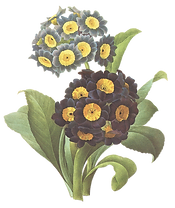A Place to Repair
- Cynthia Thomas
- Oct 3, 2017
- 3 min read

As we’ve seen in the news and witnessed in the onslaught of storms this season, life is a struggle. It’s hard. It can be messy.
So where does one go to repair? to mend their heart? fix their soul?
For as old as time, the garden offers refuge. It has been said you can bury a lot of troubles digging in the dirt. I rediscovered this on a recent summer morning when I quite stumbled upon the most vertical of gardens.
I had missed the boat. Literally.
Five minutes late, I watched the ferry to Constitution Island chug up the Hudson River. I had planned to join the volunteers that go to this turn-of-the-century garden. Sometimes being late doesn’t ruin your day, but other times it absolutely does. And this was going to be one of those days.
Mad at myself, I decided instead to walk the banks of West Point and at least get some good, fresh air. Climbing a steel staircase up the mountain seemed like a good diversion. As I came around a verdant, dripping crag, there appeared a little hideaway garden. A small bit of pipe, encircled by rock, bubbled up into a fountain. There were plantings and flowers tucked into the earth. And a bench.
But who had created this retreat? It didn’t take long to find out, as a plaque with the name KOSCIUSZKO was pressed into the granite face of the cliff. What could have possessed a person to create a garden in such an inaccessible place, I wondered. Certainly, it was quiet and peaceful, but really, it was carved out of steep rock.
I couldn’t help but think of the biblical passage, “and it shall come to pass, while my glory passeth by, that I will put thee in a cleft of the rock, and will cover thee with my hand until I have passed by.” Exodus 33:22
As I came to learn by winding a rotary slide show machine, Tadeusz Kosciuszko (1746 – 1817) was a Polish-Lithuanian military engineer who left Poland in 1776 to help the American Revolutionary efforts, specifically to design the fortifications at West Point. During his tenure, he used his own effort and off-duty time to carve out this gem.
In an entry made in a journal dated July 28, 1778, a fellow West Point resident, Dr. Thatcher wrote in his diary:
“Here I had the pleasure of being introduced to Colonel Thaddeus Kosciuszko, a gentleman of distinction from Poland... He had amused himself while stationed at the Point, in laying out a curious Garden in a deep valley, abounding more in rocks than in soil. I was gratified in viewing his curious water fountain with spraying jets and cascades.”
Kosciuszko, celebrated this year, declared "Year of Kosciuszko." by UNESCO (The United Nations Educational, Scientific and Cultural Organization) is renowned as a Polish and American patriot, hero, altruist, and champion of freedom on two continents. He enjoyed some military success in his homeland, fighting the Russian encroachment, but he became enamored with the American cause of freedom. As engineers were in short-order, he made the passage to the New World and would become close companions of General Washington and Thomas Jefferson, with whose humanity efforts he agreed.
It doesn’t surprise me that he sought solace during the struggle to birth a free nation. If you read the website that heralds his accomplishments and preserves his legacy, you will see that this man experienced personal setbacks, as well as professional ones.
Like you and me, he had bleak days but didn’t let that define him.
I’m struck by the idea that here I am - clippers in hand – so I might as well trim the unwieldy vines and trim back a few overgrown branches. I concentrate my efforts on an unpruned Japanese Maple and bring back some elegance to a bushy specimen. Maybe we can’t repair the whole world, but it’s nice to put our hands to the good we can do, rather then be paralyzed by what we can’t.
There will be hard days, missed boats and days we wished we stayed in bed, but rather than bury our heads in the sand, what if we hid our hearts in the rock?
The rock on which Moses stood, and in the clift of which he was sheltered, was doubtless an emblem of Christ; in whose person, character, and salvation alone, sinners may by faith see the glory of God, and live; for there it appears in softened splendour; as the sun, when his brightness is diminished by a mist, is beheld more distinctly by the human eye.--Scott























Comments